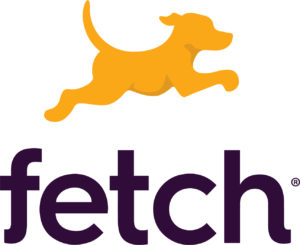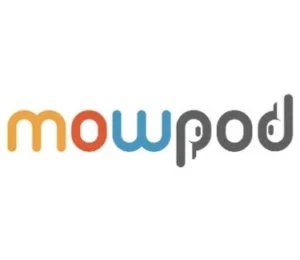Is Salesforce the center of the marketing universe? — Mathew Sweezey // Salesforce
Mathew Sweezey
Salesforce

- Part 1The Next Marketing Revolution Is Right In Front of Us
- Part 2 Is Salesforce the center of the marketing universe? — Mathew Sweezey // Salesforce
Show Notes
Quotes
-
“The gist of our conversation was there is an inflection point where people started creating more contentthan ever before. There is a change in the media landscape and that changed how consumers think about marketing.” -Ben“Marketers need to shift their mindset from basically pushing out messages about their product to understanding what their customer experiences are and building touchpoints around the experience.” -Ben “First off, the customer is the center of everything. If we keep that in mind, of saying context marketing means we have to understand the goal it’s trying to solve in the moment and then trying to reach that goal. That interaction may happen at any point in time across the customer lifecycle which means that we need all the department information connected.” -Mathew“We are the number one CRM, number one marketing and number one support. There are a lot of things that we’re really good at and that positions us expertly to be able to say, we have a 360 degree view of your customer and we can make sure that any experience you create is as contextual as possible.” -Mathew“We actually have an SMB-focused product called Salesforce Essentials. There’s definitely a wide range of business, it doesn’t matter what business you’re in. You need to be able to put your customer at the center of that business and know who they are at every interaction.” -Mathew“There are a couple of key core capabilities that businesses must have. One is they must have a single and shared view across the entire organization. In fact the way final were high-performers we’re 17 times more likely to be able to create a single and shared customer view across all departments. That’s number one.” -Mathew“Organizations were built on siloed structures. Where marketing was a silo and they each have their own tools, reporting methods and their own heads of state. We mustget past that and re-organize the structure of the business where experience is across all of those. Then the next would be some type of scale capability,” -Mathew“Every tool has an automation capability. So it’s not just that you have marketing automation which is typically a specific tool that does email nurturing behavior-based, more B2B specific. It is can you tie all these disparate automations together to create a seamless journey across the entire network of your organization.” -Mathew“Another is reporting. We must be able to make sure that we can connect the dots as best as possible back to some type of a revenue number that allows us to then show the value. They do not need specifically to be attribution or ROI reporting but something more holistic.” -Mathew“From a macro standpoint, it’s always the executive then down. Number one is executive buy-in, it’s a new idea of marketing. With that, they’ve been given a much bigger budget. With that new idea, the Executive say, listen we understand that there is a technical requirement to doing this and we will then open up the budget to do that.” -Mathew“Gartner back in 2015 said that by 2020, the marketingdepartment is going to have the largest IT budget in an organization eclipsing the IT budget. We are there now. The marketing budget for IT spend just for marketing technology is now greater than the IT budget for the IT department.” -Mathew“In 2009, the MarTech landscape had 150 companies in it. 11 years later, it has 8,000. That is a lot of growth. I think the last time I looked it’s like a 45x.” -Mathew“The average data company has 15 different data sources. The average company also has about 20 different tools inside their marketing stack. Here’s the problem, each one of those tools and technologies uses a different unique identifier for each individual. Some use a hash, some use email, some use a cookie. We have an identity crisis. If we can’t specifically tie all that data together to know who a person is in a single moment, we can’t meet them in the context of that moment.” -Mathew“Assembly line was created by a man called Henry Ford. That’s why he’s famous. Not because he created the car. The assembly line was such an amazing creation that a lot of us don’t know how amazing it was. It took the production of a car from 12 hours down to 2 hours and 30 minutes. But when we move now into a new era, what didn’t Henry Ford have? Instant feedback.” -Mathew“All these tools and technologies that we’re building, it’s about understanding who the customer is, what their state is so you understand how to deliver the right message to them and be able to evaluate whether it worked to make sure that you’refiguring out if that is the right message.” -Mathew“It’s very simplistic until you have to scale it. That’s why it’s so complex. To scale something, with so many moving parts on a hyper-personal level, it’s very difficult when you do that across an entire marketplace and that’s why it is such a technical feat.” -Mathew
- Part 1The Next Marketing Revolution Is Right In Front of Us
- Part 2 Is Salesforce the center of the marketing universe? — Mathew Sweezey // Salesforce
Up Next:
-
Part 1The Next Marketing Revolution Is Right In Front of Us
Today we're going to discuss if the future of marketing is already here. Joining us is Mathew Sweezey, who is the Director of Market Strategy at Salesforce, which is the world's most recognized customer success platform. In part 1 of our conversation, we are going to discuss if the marketing revolution is right in front of us.
Play Podcast -
Part 2Is Salesforce the center of the marketing universe? — Mathew Sweezey // Salesforce
Today we're going to discuss if the future of marketing is already here. Joining us is Mathew Sweezey, who is the Director of Market Strategy at Salesforce, which is the world's most recognized customer success platform. In part 2 of our conversation, we discuss whether Salesforce and some other big companies are in the center of the marketing universe.










